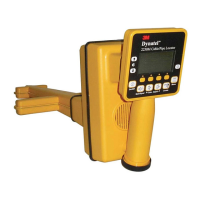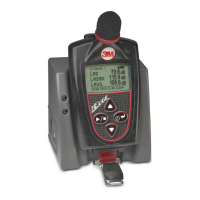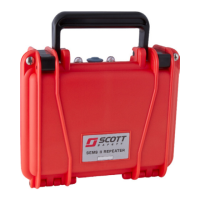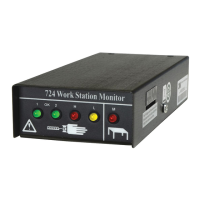78-8130-6150-0-F 21
6. Buried Cables And Pipes:
Transmitter Connections
Performabatterytest.Useoneofthefollowingthreemethodstoproduceatracesignal
onthetargetpipeorcable.
A. Direct Connect Method
m WARNING
This WARNING applies to the use of the Direct Connect Cables and the Transmitter.
To avoid potential shock, or electrically damaging the Transmitter, when setting up the
Transmitter to locate using the Direct Connect method, follow these basic steps;
• ALWAYS plug the Direct Connect Cable into the Transmitter Output Jack [T-6] BEFORE
connecting the leads to the cable/pipe to be located and the ground rod.
– Connect the red lead to the cable/pipe.
– Connect the black lead to ground rod.
A POTENTIAL FOR ELECTRICAL SHOCK, AND/OR TRANSMITTER ELECTRICAL DAMAGE, EXISTS
WHEN USING THE DIRECT CONNECT CABLE ON CABLES ENERGIZED WITH ELECTRICAL POWER
IF THE ABOVE INSTRUCTIONS ARE NOT FOLLOWED. USE APPROPRIATE SAFETY PROCEDURES.
CHECK VOLTAGE BEFORE CONNECTING TRANSMITTER. VOLTAGE HIGHER THAN 240 VOLTS WILL
DAMAGE EQUIPMENT. FOLLOW STANDARD PROCEDURES FOR REDUCING THE VOLTAGE.
PlugthedirectconnectcableintotheOutput Jack[T-6]ofthetransmitter.Connect
theblackcliptothegroundrod.Placethegroundrodintheearthperpendiculartothe
suspectedcable/pipepath.Ifnecessary,extendtheblackleadwiththeGroundExtension
Cable(#9043availableseparately).
1. Removethegroundbondingandattachtheredcliptotheshieldofthecable,pipe,
ortargetconductor.(Iflocatingpowercables,theredclipcanbeattachedtothe
transformercabinet,orthemeterbox).Metalcontactmustbemadebetweenthered
clipandthetransformercabinetormeterbox.Ifpainted,somepaintwillneedtobe
removed/scrapedofftoallowmetal-to-metalcontact.

